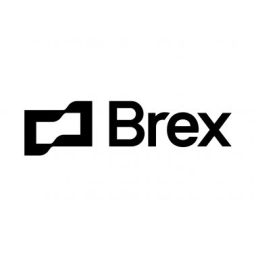Stripe vs Brex: Which financial solution is right for your business?
- 01Stripe vs Brex: overview
- 02What's the difference between Stripe and Brex?
- 03Stripe pros and cons
- 04Brex pros and cons
- 05Stripe compared to Brex
- 06Brex compared to Stripe
- 07Features comparison
- 08Stripe vs Brex: Which is the best for your business?
- 09Promotions on Payments software
- 10Alternatives to Stripe & Brex
Access up to $500 savings on Stripe & $500 on Brex
Access up to $500 savings on Stripe & $500 on Brex
Effective financial management is crucial for optimizing business operations, ensuring compliance, and supporting growth. The solution? Financial platforms that handle everything from payments to expense management. These tools provide a centralized system for managing transactions, monitoring expenses, and streamlining financial processes within your business.
However, with a range of options available, finding the right one for your needs can be challenging. In this article, we aim to simplify your decision-making process by comparing two leading financial solutions—Stripe vs Brex. After this in-depth look at their key features, pricing, and differences, you’ll be able to confidently assess which platform best aligns with your business’s financial management needs.
Stripe vs Brex: overview
Stripe and Brex are two prominent contenders in financial management technology, each offering distinct features and benefits tailored to various business needs.
Stripe is widely recognized for its powerful payment processing capabilities and developer-friendly tools. It provides a comprehensive platform for handling online payments, managing subscriptions, and supporting global transactions with ease. On the other hand, Brex is celebrated for its all-in-one corporate card and expense management platform. It offers businesses a streamlined solution for managing expenses, controlling budgets, and accessing tailored rewards programs.
Now, let's dive into the Stripe vs. Brex comparison to help you make an informed decision when selecting the right financial platform for your business's specific needs.
What's the difference between Stripe and Brex?
Stripe and Brex are both powerful financial tools, but they serve different purposes and offer distinct features that cater to varying business needs. Understanding these differences is crucial when deciding which platform is the best fit for your organization.
Stripe is primarily a payment processing platform, known for its developer-friendly APIs and extensive range of integrations. It is designed to handle online payments, subscriptions, and complex financial workflows across a global scale. Stripe's platform allows businesses to accept payments in multiple currencies, manage recurring billing, and customize payment solutions to fit their specific needs. It's an ideal choice for e-commerce businesses, SaaS companies, and any organization that requires a robust, scalable payment infrastructure.
On the other hand, Brex is a financial technology company that offers an all-in-one corporate card and expense management solution. Brex is tailored for startups and growing businesses, providing them with a business credit card that requires no personal guarantee, along with integrated expense tracking and management tools. Brex also includes features like spend controls, detailed analytics, and the ability to issue virtual cards for team members. Additionally, Brex offers rewards tailored to business spending categories, which can be particularly beneficial for companies looking to optimize their financial operations and reduce costs.
A key difference between Stripe and Brex lies in their core functionalities. Stripe excels in payment processing and financial infrastructure, making it the go-to solution for businesses focused on revenue collection and global transactions. In contrast, Brex shines in expense management and corporate card services, offering businesses a streamlined way to manage and control expenses.
When choosing between Stripe and Brex, consider whether your primary need is processing payments and managing revenue (Stripe) or optimizing corporate spending and managing expenses (Brex). Each platform is powerful in its own right, but their focus areas are distinct.
Stripe pros and cons
What are the advantages of Stripe?
- Developer-friendly API: Stripe is renowned for its highly customizable and developer-friendly API. It allows businesses to integrate payment processing seamlessly into their websites and apps, offering extensive flexibility for tailored payment solutions.
- Global payment processing: Stripe supports payments in multiple currencies and countries, making it an excellent choice for businesses with a global customer base. This includes handling complex financial operations like cross-border transactions and currency conversions.
- Comprehensive feature set: Stripe offers a wide range of features beyond basic payment processing, including subscription management, invoicing, and advanced fraud detection tools. This makes it a versatile platform for various business models, particularly for SaaS and e-commerce companies.
- Extensive integrations: Stripe integrates with a broad array of third-party tools and platforms, from accounting software like QuickBooks to e-commerce platforms like Shopify, allowing businesses to create a cohesive tech ecosystem.
- Continuous innovation: Stripe consistently updates and improves its platform, introducing new features and tools to help businesses stay ahead of industry trends. This commitment to innovation ensures that users have access to cutting-edge financial technology.
What are the disadvantages of Stripe?
- Complexity for non-developers: While Stripe's API is a major advantage for developers, it can be complex and challenging for non-technical users. Businesses without in-house technical expertise may struggle to fully leverage its capabilities without external help.
- Higher fees for some services: Stripe's standard processing fees are competitive, but certain advanced features or services, such as international payments or currency conversions, can incur higher fees. These costs can add up for businesses with specific needs.
- Limited support for certain business types: Stripe has restrictions on the types of businesses it supports. Companies in high-risk industries may face difficulties in getting approved or may be required to provide additional documentation.
- No native expense management: Unlike platforms like Brex, Stripe does not offer native expense management or corporate card services. Businesses looking for an all-in-one financial solution will need to integrate with other tools to manage expenses.
- Account stability risks: Some users report sudden account holds or terminations due to Stripe’s risk management policies. While these measures protect against fraud, they can be disruptive for legitimate businesses, especially those in high-risk categories.
Compare Stripe to other tools
Brex pros and cons
What are the advantages of Brex?
- No personal guarantee required: Brex offers corporate cards without requiring a personal guarantee from business owners. This is particularly advantageous for startups and small businesses, as it reduces personal financial risk.
- Integrated expense management: Brex provides a comprehensive expense management platform, including features like real-time expense tracking, spend controls, and the ability to issue virtual cards. This integration simplifies the management of corporate spending.
- Tailored rewards program: Brex offers a rewards program designed specifically for businesses, with points and benefits that align with common business expenses such as travel, software, and advertising. This can result in significant savings for companies that optimize their spending in these categories.
- High credit limits: Brex assesses creditworthiness based on business performance rather than personal credit scores, often resulting in higher credit limits for businesses. This can be a major advantage for startups and growing companies that need more financial flexibility.
- Easy account setup: The onboarding process for Brex is straightforward, with a quick approval process and no need for personal credit checks. This makes it easier for businesses to start using the service without lengthy application procedures.
What are the disadvantages of Brex?
- Limited to C-Corps, LLCs, and LLPs: Brex is primarily available to C-corporations, LLCs, and LLPs. Sole proprietorships and other small businesses structured differently may not be eligible for Brex’s services.
- No traditional banking services: Brex is not a traditional bank and does not offer services like checking accounts or loans. Businesses looking for a complete financial institution may need to pair Brex with other banking services to meet all their financial needs.
- Rewards structure complexity: While Brex offers valuable rewards, the structure can be complex, with varying points multipliers based on spending categories and card types. This can make it difficult for businesses to fully understand and maximize their rewards potential.
- Dependence on business cash flow: Brex's credit limits and approval are closely tied to a business's cash flow and financial health. Companies with fluctuating revenues or in early stages might face lower limits or more stringent requirements.
- Limited international capabilities: Brex’s services are primarily focused on U.S.-based companies, and its international payment capabilities are not as robust as those offered by global payment processors like Stripe. This can be a limitation for businesses with significant international operations.
Compare Brex to other tools
Stripe compared to Brex
Stripe and Brex cater to different aspects of financial management, with Stripe excelling in payment processing and global financial operations, while Brex focuses on corporate expense management and credit solutions. Stripe offers a developer-friendly platform for businesses needing robust online payment infrastructure, ideal for e-commerce and SaaS companies.
Brex, on the other hand, provides an all-in-one corporate card and expense management system without requiring personal guarantees, making it particularly attractive to startups. While Stripe is the go-to for revenue collection, Brex is better suited for managing and optimizing corporate spending.
Is Stripe better than Brex?
Whether Stripe is better than Brex depends on your business needs. Stripe is superior for businesses focused on payment processing, offering extensive features for handling online transactions, subscriptions, and global payments. It's particularly beneficial for e-commerce and SaaS companies needing a robust, customizable platform.
In contrast, Brex shines in corporate expense management, providing high-limit corporate cards, real-time spending controls, and detailed financial reporting, making it ideal for startups and companies prioritizing expense management and credit solutions. Stripe excels in revenue collection and payment infrastructure, while Brex is better for managing and optimizing corporate financial operations.
What is Stripe best used for?
Stripe is best used for handling online payment processing and building customized financial solutions for businesses. It excels in providing a powerful and flexible platform for managing transactions, subscriptions, and invoicing, making it ideal for e-commerce, SaaS companies, and businesses with complex payment needs.
Stripe's developer-friendly API allows for seamless integration into websites and applications, supporting global payments in multiple currencies. It is also highly scalable, accommodating the needs of small startups to large enterprises. Stripe's robust security features and advanced fraud detection further ensure that businesses can handle payments safely and efficiently.
Can Stripe replace Brex?
Stripe and Brex serve distinct purposes, making it difficult for Stripe to fully replace Brex. Stripe is primarily a payment processing platform, designed to manage online transactions, subscriptions, and global payments. It excels in handling the financial infrastructure needed for e-commerce and SaaS businesses.
Brex, on the other hand, focuses on corporate expense management, offering business credit cards, spend tracking, and expense management tools tailored for startups and growing companies. While Stripe provides comprehensive payment solutions, it lacks the integrated expense management and corporate card services that Brex offers, meaning the two platforms complement rather than replace each other.
Is Stripe cheaper than Brex?
Comparing the costs of Stripe and Brex is challenging because they cater to different financial needs. Stripe charges transaction fees for payment processing, which can vary depending on the type of payment, currency, and additional services like currency conversion or fraud protection.
Brex, on the other hand, doesn't charge for using its corporate cards but may have fees related to certain services or features, such as international transactions. The cost-effectiveness of Stripe versus Brex depends on how each platform is used within a business. Stripe’s pricing structure might be cheaper for simple payment processing, while Brex could offer better value for expense management and corporate spending.
Is there a better Payments software than Stripe?
Whether there's a "better" software than Stripe depends on your specific financial management needs and business goals. Stripe is highly regarded for its powerful payment processing, global transaction capabilities, and developer-friendly APIs, making it an excellent choice for many businesses, especially in e-commerce and SaaS.
However, alternatives to Stripe, such as PayPal, Square, and Adyen, may better suit certain companies. PayPal offers broad consumer adoption and ease of use, Square provides an all-in-one solution for small businesses, and Adyen excels in global payment solutions with advanced risk management. The determination of the "better" software depends on your unique business model, transaction volume, and integration requirements.
Waived Stripe fees on your next $20,000 in payment processing on Stripe
Get Waived Stripe fees on your next $20,000 in payment processing on Stripe and up to $500 savings with Secret.
Brex compared to Stripe
Brex and Stripe cater to different financial aspects, making them complementary rather than direct competitors. Brex focuses on corporate expense management, offering business credit cards, spend tracking, and rewards tailored for startups and growing companies. It provides a streamlined solution for managing corporate spending without requiring personal guarantees.
Stripe, on the other hand, specializes in online payment processing and financial infrastructure, supporting global transactions, subscriptions, and invoicing. While Stripe is ideal for businesses needing robust payment solutions, Brex excels in optimizing and controlling corporate expenses.
Is Brex better than Stripe?
Whether Brex is better than Stripe depends on your specific financial needs. Brex is better suited for businesses that require comprehensive expense management, high-limit corporate credit cards, and detailed financial oversight. It offers tools that are particularly beneficial for startups and companies looking to streamline spending and optimize financial operations without personal guarantees.
While Stripe is unmatched in payment processing and online transactions, Brex stands out in its ability to manage and control corporate expenses efficiently. For businesses focused on expense management rather than payment processing, Brex offers a more targeted and effective solution.
What is Brex best used for?
Brex is best used for corporate expense management and providing businesses with a streamlined financial solution. It offers a corporate credit card tailored for startups and growing companies, with no personal guarantee required.
Brex excels in helping businesses manage and control expenses, track spending in real-time, and optimize financial operations through detailed analytics and spend controls. Its integrated platform also provides rewards specifically designed for business spending, making it an ideal choice for companies looking to simplify expense management, improve cash flow management, and gain better visibility into their financial activities. Brex is particularly valuable for tech companies and startups.
Can Brex replace Stripe?
Brex cannot fully replace Stripe because they serve different financial functions. Brex is designed for corporate expense management, offering business credit cards, spend tracking, and financial tools tailored for startups and growing companies. It focuses on managing and optimizing corporate spending, rather than handling payments from customers.
Stripe, on the other hand, is a payment processing platform that excels in managing online transactions, subscriptions, and global payments. While Brex helps manage expenses and streamline financial operations within a company, Stripe is essential for businesses that need to process payments. The two platforms complement each other rather than serve as direct substitutes.
Is Brex cheaper than Stripe?
Determining whether Brex is cheaper than Stripe depends on how each platform is used, as they serve different purposes. Brex doesn’t charge transaction fees for its corporate credit cards but may have costs associated with certain services, like international transactions or advanced features.
Stripe, on the other hand, charges fees per transaction for payment processing, which can vary based on payment methods, currencies, and additional services. For businesses focused on payment processing, Stripe’s fees might add up, while Brex’s pricing could be more cost-effective for managing corporate expenses.
Is there a better Online Banking software than Brex?
Determining whether there's a superior software to Brex depends on your specific financial management needs and business goals. Brex excels in providing corporate cards and expense management tailored for startups and tech companies, offering features like real-time spending controls and rewards optimized for business expenses.
However, alternatives to Brex such as Ramp, Divvy, Expensify, and Airbase may better suit different organizations. Ramp focuses on automated expense management with a strong emphasis on savings, Divvy offers a budgeting-first approach with built-in spend tracking, and Airbase combines expense management with accounts payable automation. The best choice hinges on your specific needs, budget, and desired features.
50,000 points for $100,000 deposits in Brex business accounts on Brex
Get 50,000 points for $100,000 deposits in Brex business accounts on Brex and up to $500 savings with Secret.
Features comparison
Stripe Excels Ahead of Brex in Payment Processing Capabilities
Stripe offers an advanced payment processing system that is truly global in scope, enabling businesses to accept payments from customers worldwide in over 135 currencies. It supports a wide range of payment methods, including major credit and debit cards, digital wallets like Apple Pay and Google Pay, bank transfers, and even local payment methods specific to different regions, such as Alipay in China and SEPA Direct Debit in Europe. For instance, an online retailer can easily cater to international customers by offering them the convenience of paying in their local currency with their preferred payment method.
On the other hand, Brex focuses more on corporate spending and expense management and does not directly offer these extensive payment processing capabilities. This makes Stripe the superior choice for businesses that need a comprehensive, flexible, and globally accessible payment processing solution.
Both Stripe and Brex Offer Robust Security and Fraud Prevention
Both Stripe and Brex prioritize security and fraud prevention, but they do so with slightly different focuses tailored to their core functionalities. Stripe incorporates advanced fraud detection tools, such as Stripe Radar, which uses machine learning and real-time data analysis to identify and block suspicious transactions before they can impact a business. This is particularly beneficial for e-commerce platforms handling high volumes of transactions, where fraud can be a significant risk. For example, Stripe’s algorithms can analyze patterns across millions of transactions, automatically flagging potential fraud without manual intervention.
Meanwhile, Brex ensures data security through a comprehensive approach that includes SOC 2 Type II certification, ensuring that its data management practices meet strict industry standards for security, availability, and confidentiality. Additionally, Brex maintains PCI DSS compliance, safeguarding credit card information, and employs multi-factor authentication (MFA) to protect user accounts. This level of security is essential for businesses managing sensitive financial data and corporate expenses.
Stripe Excels Ahead of Brex for Ease of Use
When it comes to ease of use, Stripe clearly emerges at the top. Stripe’s interface is designed with simplicity and intuitiveness in mind, making it accessible even to those without extensive technical expertise. For example, setting up payment processing is straightforward, with clear navigation and well-documented guides, allowing businesses to start accepting payments quickly. Its dashboard is clean and organized, enabling users to manage transactions, refunds, and customer data with ease.
On the other hand, while Brex also offers a user-friendly experience, its platform is more tailored toward financial experts and larger businesses, which can make some features, such as detailed expense analytics and advanced spend controls, seem complex for beginners or small startups. Thus, Stripe's simplicity and ease of use make it a better fit for businesses seeking a straightforward payment processing solution.
Stripe Outshines Brex in Integration Capabilities
When it comes to integration capabilities, both Stripe and Brex provide extensive options, but Stripe outshines Brex with its superior compatibility and a vast array of integration possibilities. Stripe seamlessly integrates with a wide range of platforms such as Shopify, Magento, WooCommerce, and Salesforce, offering unparalleled flexibility for businesses. For example, an e-commerce store using Shopify can effortlessly connect Stripe to manage payments, subscriptions, and invoicing all within one platform, streamlining operations and enhancing efficiency.
In contrast, Brex, while offering valuable integrations, primarily focuses on accounting software like QuickBooks, Xero, and Expensify. This narrower focus on financial management tools limits its versatility compared to Stripe’s broader ecosystem, which can integrate across various business functions from sales to customer support. Thus, Stripe’s broader integration capabilities make it the better choice for businesses seeking operational flexibility and the ability to connect with multiple tools and platforms across their operations.
Brex Excels Ahead of Stripe in Comprehensive Financial Reporting
Brex excels in providing comprehensive financial reports, offering businesses powerful tools to manage budgets, hiring plans, and financial models with precision. Companies can execute detailed financial planning by leveraging accurate data, comparing different scenarios, and tracking key financial KPIs through Brex’s user-friendly dashboards. For example, a startup can easily monitor cash flow, set budget limits, and forecast future expenses, all within the Brex platform, allowing for more informed decision-making.
While Stripe also offers analytics and reporting, its focus is primarily on payment data, such as transaction volumes, revenue growth, and payment methods. This makes Brex’s financial reporting capabilities far more comprehensive, catering to a broader range of financial management needs beyond just payments, making it a superior tool for businesses looking to gain deeper insights into their overall financial health.
Brex Excels Ahead of Stripe in Offering Flexible Credit Lines
Brex provides businesses with instant access to a flexible credit line that far exceeds traditional credit card limits, offering credit limits up to 75% of the account balance. This is particularly advantageous for startups and growing companies that need substantial credit without the hurdles of personal guarantees or credit checks.
For example, a tech startup with a high monthly burn rate can leverage Brex’s generous credit limits to cover operational expenses and scale quickly, without worrying about the typical restrictions of traditional credit cards. This feature is entirely missing in Stripe, which focuses on payment processing and lacks any built-in credit services. As a result, Brex stands out as the superior choice for businesses seeking flexible, high-limit credit options to support their growth and operational needs.
Stripe Excels Ahead of Brex in Subscription Billing Capabilities
Stripe offers robust and flexible subscription billing capabilities, making it an ideal choice for businesses that rely on recurring revenue models. With Stripe, companies can easily support various billing frequencies, such as weekly, monthly, or annually, and offer trial periods to attract new customers. Additionally, Stripe allows businesses to create highly customizable subscription plans, including tiered pricing, usage-based billing, and add-ons, giving them the flexibility to meet diverse customer needs. For example, a SaaS company can leverage Stripe’s advanced billing features to manage multiple subscription tiers, offer discounts, and automate complex billing cycles seamlessly.
While Brex provides tools for managing subscriptions, its capabilities are not as detailed or flexible as Stripe’s. Brex’s focus remains on corporate expense management rather than intricate subscription billing, making Stripe the superior choice for businesses that need comprehensive and customizable subscription management solutions.
Subscribe to our newsletters.
No FOMO here. Stay up-to-date on all the latest deals and news with our monthly newsletter straight to your inbox like 123,000+ entrepreneurs (+ Get 10% off on on our Premium Membership!)
Stripe vs Brex: Which is the best for your business?
Stripe is the best tool for you if:
- Your business requires a powerful payment processing solution that supports global transactions and multiple currencies, making it easy to accept payments from customers worldwide.
- You need a developer-friendly API to customize payment workflows, integrate seamlessly with your existing systems, and build tailored financial solutions without extensive technical overhead.
- You run a subscription-based business and need advanced billing features, including flexible billing cycles, trial periods, and usage-based pricing, to manage recurring revenue efficiently.
- Your business prioritizes security, with a need for advanced fraud detection tools like Stripe Radar that protect against suspicious transactions and minimize financial risk.
- You want extensive integration options, enabling you to connect with platforms like Shopify, Magento, and Salesforce, ensuring smooth operations across various business functions.
Brex is the best tool for you if:
- Your business needs a corporate credit card with high limits and no personal guarantee, offering instant access to credit without the constraints of traditional financial institutions.
- You want a streamlined solution for managing and tracking expenses, with real-time spend controls, detailed analytics, and the ability to issue virtual cards for your team members.
- Your company prioritizes efficient financial management, including budgeting, forecasting, and cash flow analysis, all within an integrated platform designed to optimize business spending.
- You’re a startup or tech company looking for a financial tool that rewards business spending with tailored points and benefits across categories like travel, software, and advertising.
- You need a financial platform that ensures top-tier security, with SOC 2 Type II certification, PCI DSS compliance, and multi-factor authentication to protect sensitive financial data.
Alternatives to Stripe & Brex
Promotions on Payments software
Start saving on the best SaaS with Secret.
Secret has already helped tens of thousands of startups save millions on the best SaaS like Stripe, Brex & many more. Join Secret now to buy software the smart way.




















